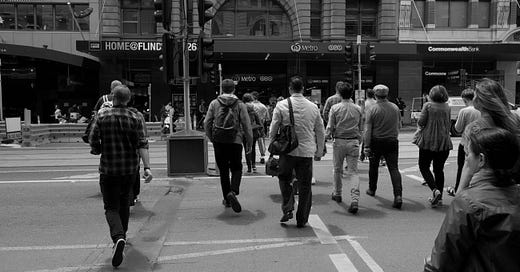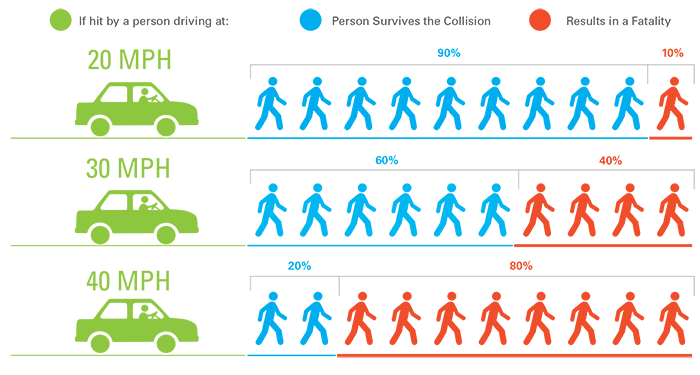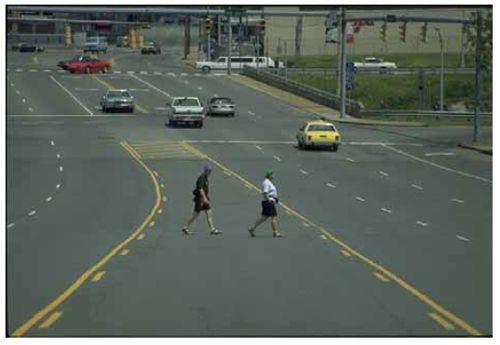Let’s talk about speed American roads.
Why? Because vehicle speed is one of the major reasons pedestrians in the United States.
Take this stat into account. If a pedestrian is hit by a car traveling 20 mph, they have less than a 10% chance of being killed. If that same car is traveling 40 mph, the person’s chance of dying jumps to 80%.
This graph shows just how dangerous speed is for pedestrian-vehicle crash severity:
Other studies have been released with stats that are even more unsettling: Take one that has 40 mph pedestrian-vehicle collisions being fatal 84% of the time and 20 mph collisions fatal only 5% of the time.
The lesson to take from these studies is this: slower traffic equals less dead pedestrians, and we can all agree that’s a good thing.
The truth is, America generally holds pedestrians in contempt. Even though every person that has ever lived is a pedestrian at some point in their day, whether that’s walking to your car from the store or heading to the transit station, many parts of this country just don’t design for pedestrian safety, or even with pedestrians in mind at all.
In some cities, arterial roads can be somewhere between 5–9 lanes wide. Crossing that as a pedestrian is harrowing even if you can walk fairly fast. For someone slower or walking-impaired, the notion of crossing that street might even be impossible, essentially isolating you if you can’t drive.
If you’re caught in the wrong place on those roads, you will most likely die if someone hits you going close to 40 mph or more, which is often the speed limit of these types of city roads.
Another big impact is SUVs, which have risen in popularity over the last few years. Cheaper gas and copious parking lead to people buying bigger cars, which represent an even more dangerous threat to pedestrians.
Take a look at the change in pedestrian fatalities among car type since 2009 below:
The problem is, pedestrian fatalities have been increasing. Over the years 2009 to 2018, pedestrian fatalities both increased in number and became a larger percentage of all traffic fatalities. Pedestrian deaths rose from 4,109 to 6,283 while going from 12% to 17% of all traffic fatalities.
During those years, total traffic fatalities rose 8% while pedestrian fatalities rose 53%.
What’s the reason for this? The reasons are Speed and Design.
Our cities need to lower speed limits on roads (appropriate to their design) to reduce how fatal pedestrian-vehicle collisions become. Redesign and lower speeds can go hand in hand.
Cities need to redesign roads to not only organically calm traffic and slow speeds, but to protect pedestrians and cyclists. This includes good sidewalk design, crosswalks, pedestrian refuges, and traffic circles/roundabouts.
If we start to do this, we can lower the risk that pedestrians face walking on streets in American cities. Look at the picture below for an example of a street redesign that has helped to protect pedestrians and create safer roads for everyone.











